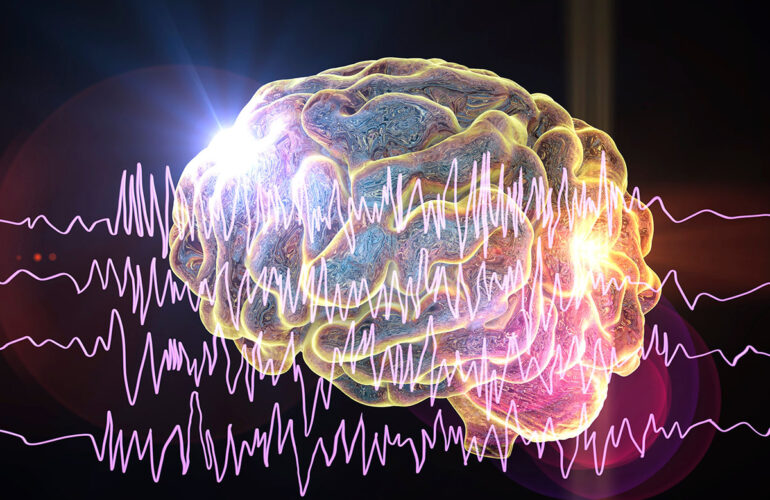According to the Centers for Disease Control and Prevention (CDC), just a couple years ago, around 1.2% of the U.S. population had epilepsy. Of those, around 3.4 million were adults and almost half a million were children. It’s estimated that one in every twenty-six people in the United States will eventually develop epilepsy sometime in their lives. Although there are medications available to treat the disorder, many come with potentially negative side effects. Researchers are examining CBD as a viable treatment.
Overview of Seizures and Epilepsy
Seizures take place when there are abnormal electrical changes or discharges in the brain. Brain cells prevent or stimulate other brain cells from sending messages which causes an imbalance, leading to chemical changes in the brain and electrical surges which result in seizures. Seizures are not a disorder by themselves, but are instead symptoms of other brain disorders. Some seizures are noticeable and others are silent.
Epilepsy on the other hand, is a neurological disorder affecting the nervous system. It is diagnosed after a person has at least two seizures or after one seizure with a very strong risk of experiencing more. Epileptic seizures may have a genetic component and run in families or they can be associated with some type of brain injury or trauma, sometimes referred to as “adult-onset seizure disorder”.
Medication for Seizures and Epilepsy
Symptoms of seizures and epilepsy can be mostly controlled through the use of medications called antiepileptic drugs (AEDs) and antiseizure or anticonvulsant medications. There are a number of medications available depending upon the person’s type of seizures, age, and other health conditions. These types of medications come with mild side effects including:
- Fatigue
- Light-headedness
- Weight gain
- Compromised bone integrity
- Clumsiness
- Rashes
- Trouble with talking, remembering and thinking
More severe side effects include depression, an inflamed liver, and serious skin conditions.
Lifestyle Modifications
Non-medication-based treatments include dietary changes such as adding the ketogenic, medium-chain triglyceride (MCT) diet, low glycemic index treatment (LGIT), and consuming more carbohydrates low on the glycemic scale. These dietary changes are meant to reduce risk for seizure activity and help manage symptoms of epilepsy. Other lifestyle changes that may be helpful in reducing risk include:
- Quality and restful sleep
- Regular exercise
- Staying well hydrated
- Wearing a medical alert bracelet
- Finding a great doctor
- Letting friends and family know about the condition
- Finding a good support group
Nerve Stimulation
A last resort may include nerve stimulation or surgery. There are two different types of nerve stimulation. Vagus nerve stimulation involves insertion of a small vagus nerve stimulator under the skin of the chest which sends bursts of electricity through the nerve to the brain helping to control seizure activity. Responsive neurostimulation involves the use of a neurostimulator which is inserted into the scalp. It searches for potential seizure activity in the brain and sends impulses to stop them.
Surgery
Two procedures for epilepsy include resective and disconnective surgery. Resective surgery involves removing the part of the brain causing seizures. Disconnective surgery is a procedure in which the surgeon cuts nerve pathways in the brain that are involved in seizure activity. These would always be considered last resort procedures due to their radical and invasive nature.
CBD-Based Medication
Epidiolex is a patented pharmaceutical made from cannabidiol and is prescribed for Lennox-Gastaut syndrome (a severe form of infant and childhood epilepsy) and for Dravet syndrome, also known as severe myoclonic epilepsy of infancy (SMEI), a rare and devastating form of intractable epilepsy beginning in infancy.
Research Findings
Numerous studies investigating the effects of CBD for both seizures and epilepsy have shown good to great results. Two experts, Leinow and Birnbaum state in their book CBD: A Patient’s Guide to Medical Cannabis, “Out of all of the many uses of CBD, using it for seizure control has shown some of the most spectacular and well-publicized results”. They report that many individuals experience a reduction in frequency, intensity and duration of seizures or they stop completely after using CBD.
Other findings include:
- CBD is well tolerated and has few to no side effects
- Can be used successfully in children and adults
- Can be used in conjunction with antiseizure medications
- CBD can be effective for focal and generalized seizures
- CBD causes fewer side effects than traditional medications
Final Thoughts on Seizures, Epilepsy and CBD
Seizure disorders and epilepsy affect many people in the U.S. and around the world. While there are medications and lifestyle changes to consider, CBD has shown impressive results. It’s effective and safe and has no unpleasant or serious side effects that prescription medications may have. When people experience negative side effects, they are more likely to stop taking their medications. CBD might hold a bright future for people with seizures and epilepsy. More time and research will hopefully confirm this, and the sooner the better.

